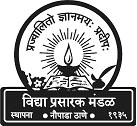The
China affair: what it means to us
Editorial in Down to Earth
September 14, 2007
By Sunita
Narain
A journalist
recently called me to check if I thought that India had the
same food-consumer product record as China. He wanted to know if we
face
the problems that are plaguing Chinese exports of late: tainted pet
food, toxic toothpaste, lead-paint in toys, chemicals in textiles.
It got
me thinking: of China and of India and more importantly, about
the phenomena we call the market.
The fact
is that the US and other parts of the rich world, which are
today crying foul about Chinese toxic exports, should have known better.
They should have known that they were in the business of buying cheap
food and cheap consumer products, and that there was something rotten
with this business. They should have been aware that goods produced
in
their country are expensive, partly, because they pay for pollution
control, surveillance and enforcement of pollution regulations and for
new technologies to get rid of newer and newer toxins.
So it is
in the interest of the rich world to out-source production as
it has to feed its ravenous appetite for everything. The economy of
the
rich world is built on the principle of consuming disposable
products-new toys that come with each season or with each new hit movie,
and processed food that breaks all pricelines. This madly consuming
rich
society needs cheap goods for its happiness and to make its economy
profitable.
But these
goods are cheap because the Chinese discount their environment
in manufacturing them. In this market, 'competitive advantage' lies
in
not paying the price of environmental safety.
Then why
are we surprised at the recent scandals that exposed toxins in
Chinese products. This had to happen sooner than later. Think of the
late 1980s, when the US was shocked to find that pesticides it had
banned because of their toxicity were finding their way back into food
in the country, through imports. These were the same pesticides that
US
industries had exported to developing countries, knowing full well that
they were illegal and toxic.
The circle
of poison was complete then, as it is now. The only
difference is that this time the exports are not just of materials but
of methods of production, which come with incessantly occurring costs
to
the environment.
There is
no doubt in my mind that if India is to also become the
favourite junk provider of the world-and we are desperate for that-then
we will have to do the same. Our competitive advantage, even more than
the Chinese who have money to invest in necessary energy and transport
infrastructure as well as the power to fix their currency levels in
this
linked world, will lie in beating down our environmental regulations.
The only
difference between us and the Chinese is our democracy-that is
if we allow it to breathe. Whether Indian industry likes it or not,
the
internal pressure it gets from consumer and environmental interests
is
its safety valve. This pressure is forcing the Indian industry to
produce quality food and meet environmental standards, not only for
exports but also for sale in domestic markets. It is this, if anything,
that distinguishes us from the Chinese, as I said to the journalist
who
called me. But this pressure will not be able to withstand the
desperation to feed the desire for cheap goods in the rich world.
There is
also no doubt in my mind that the western world has used
environmental safeguards to its advantage-to keep out goods produced
in
the developing world by claiming that these are unsafe and do not meet
stringent quality requirements. Over the years the green stick has been
another name for trade protectionism.
But it
is also clear that the Chinese and the Indians cannot win this
game by playing it. It is a game of catch up: who invents the most
deadly toxin wins the round. This game works when toxins are invented,
used, and found to be deadly. But even as the inventor world stops their
use, the toxins are exported to the emerging world-in the name of
progress. Now, when the new world uses the same toxin, trade barriers
are put up, this time in the name of consumer safety. Not only does
the
toxin change but even the amount at which a substance is considered
a
toxin changes. This requires expensive equipment to test the toxin at
minute levels and even more expensive equipment to clean up.
In this
game of catch-up, the only option is to invest in first
producing dirt and then invest in cleaning it up or invest in phasing
it
out. After this, another chemical must be introduced-this is still not
qualified to be a toxin but will soon become one. In this business,
environmental protection is expensive and never-ending. In this green
business, we cannot win.
It is for
this reason that we must change the rules, if not the game
itself. We cannot keep arguing that our trade advantage lies in
undermining environmental safety. We must argue instead that the
environment is our competitive advantage. It is our advantage only if
we
can learn not to discount it but to use it.
We must
build our industry and agriculture by learning from the
expensive mistakes made by the western world. We can beat them, not
by
playing their game of catch-up, but by reinventing our economic pathway.
We can practice agriculture today without first using the toxins that
need to be cleaned up later. This will mean reinventing the rules for
organic and safe food production. We can produce cheaper goods by
cutting out the unnecessary and expensive toxins that will need cleaning
up tomorrow.
We can
close this circle-not the circle of poison but of nectar. It is
not just our choice, but our necessity. Let us be clear.
